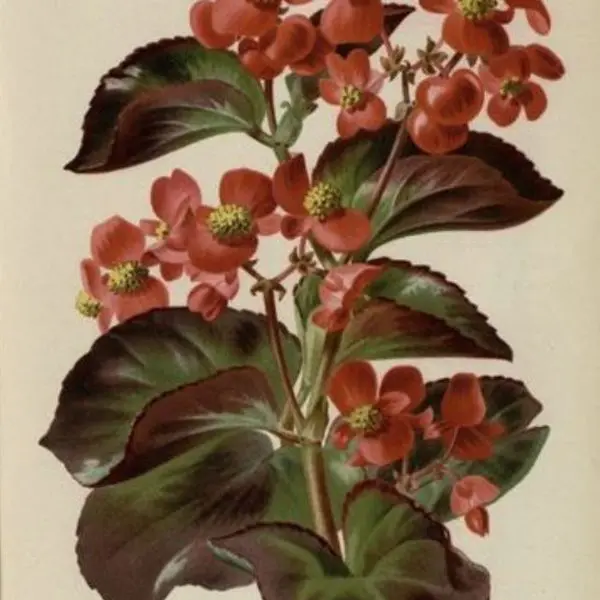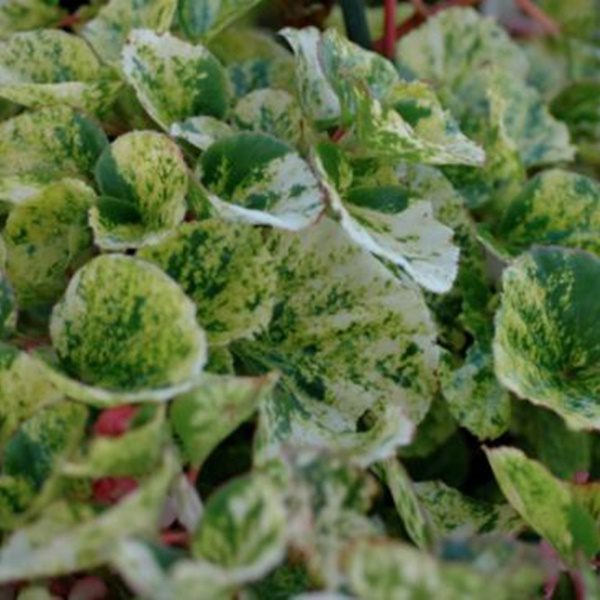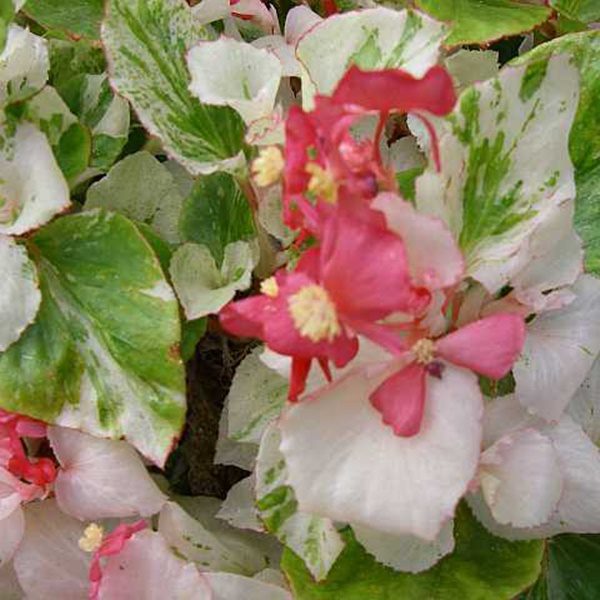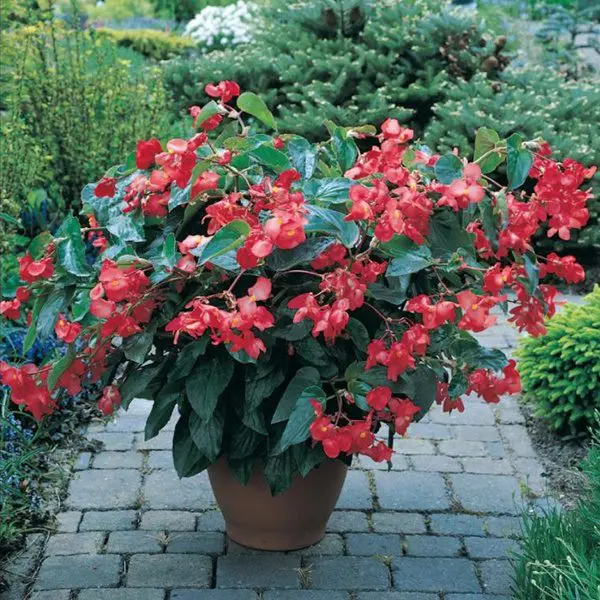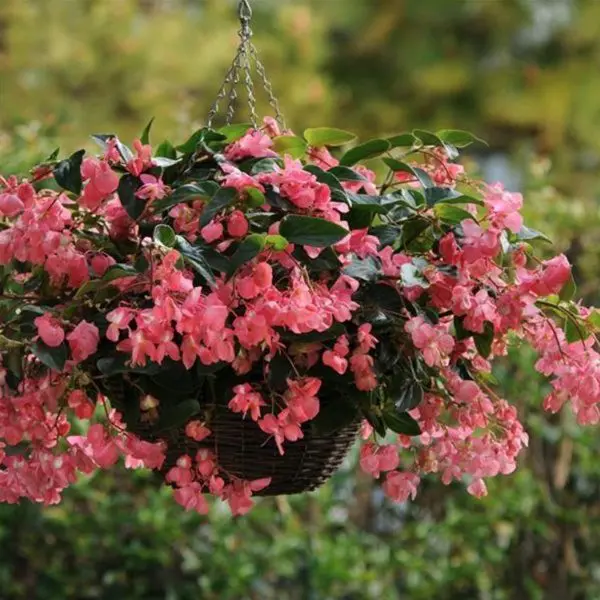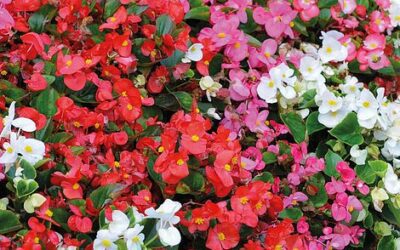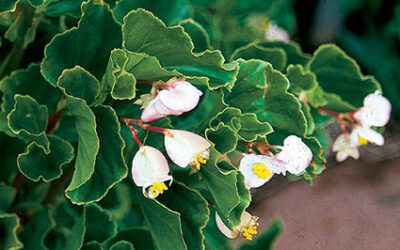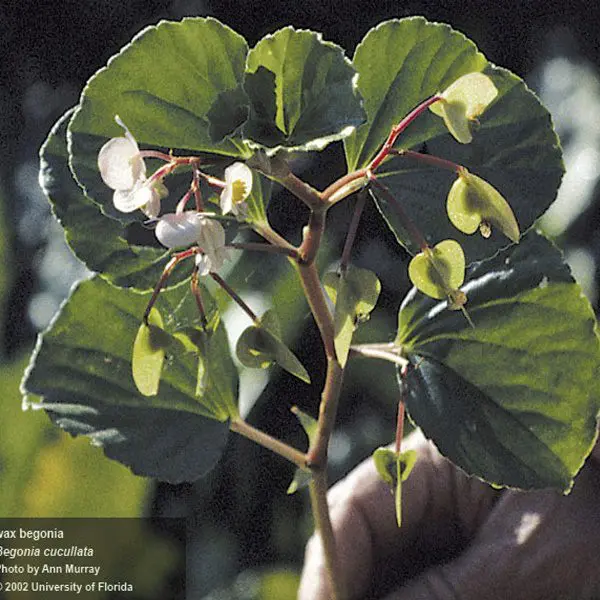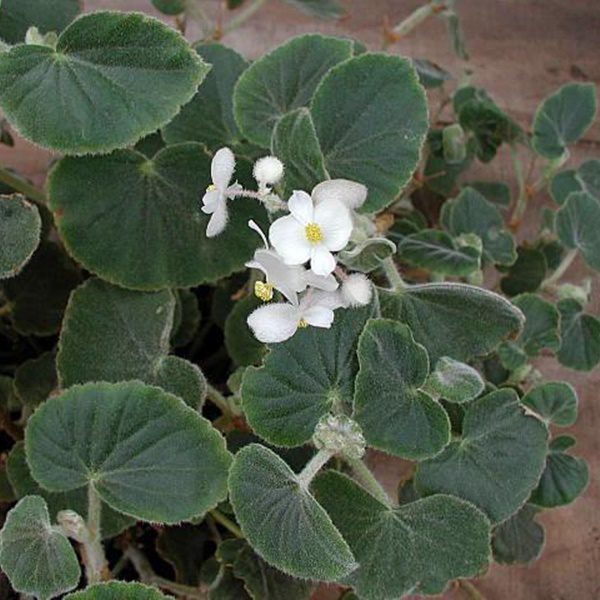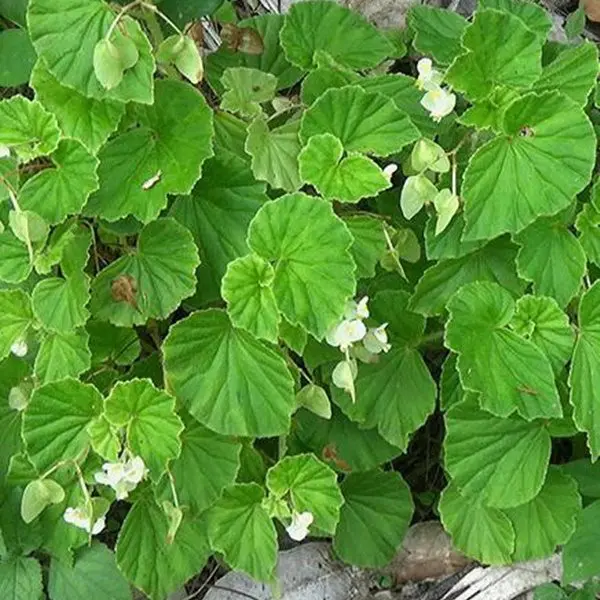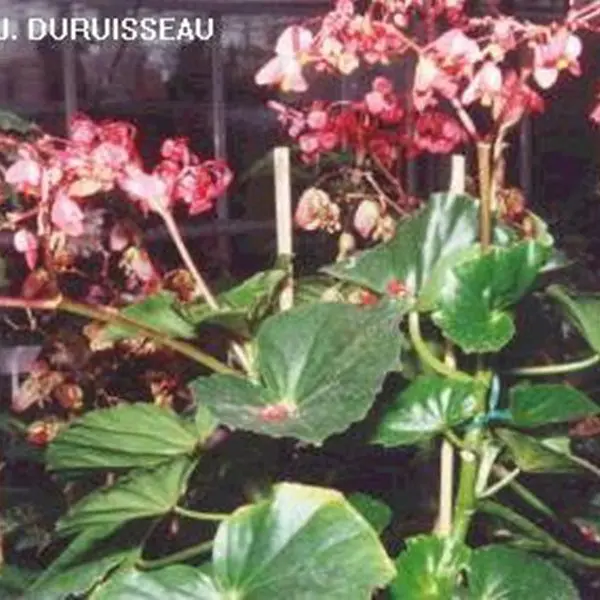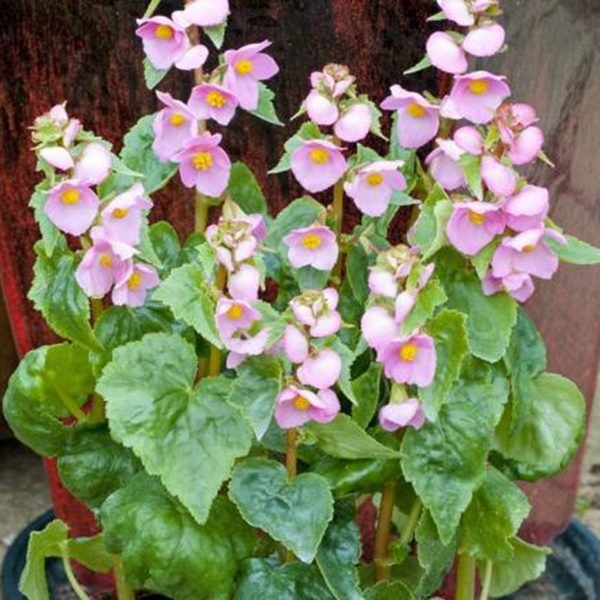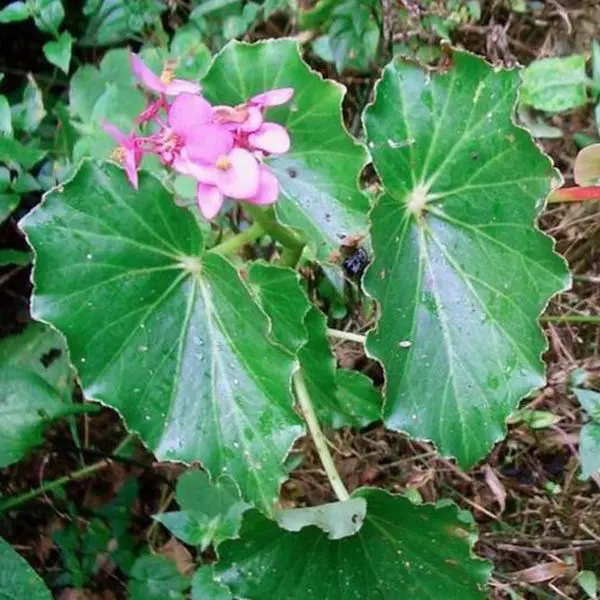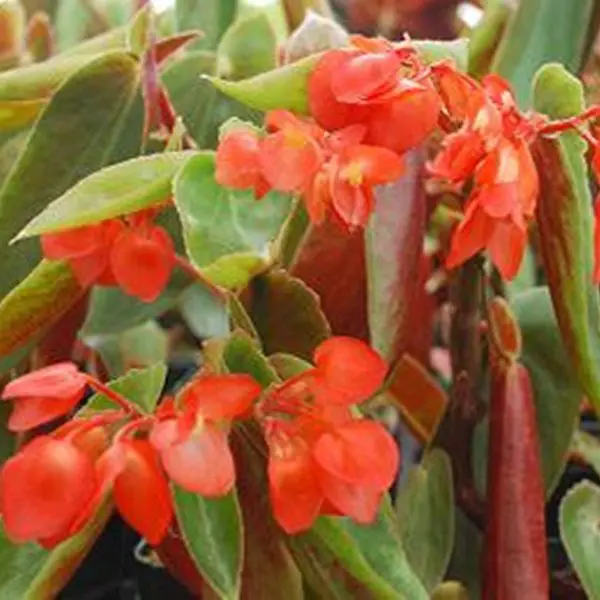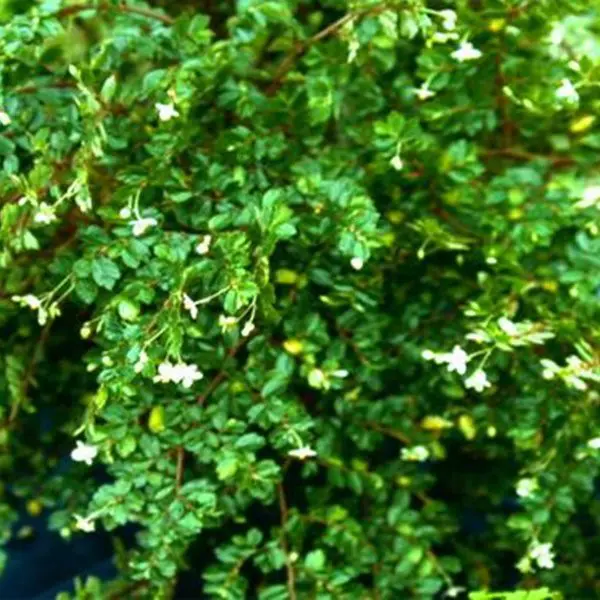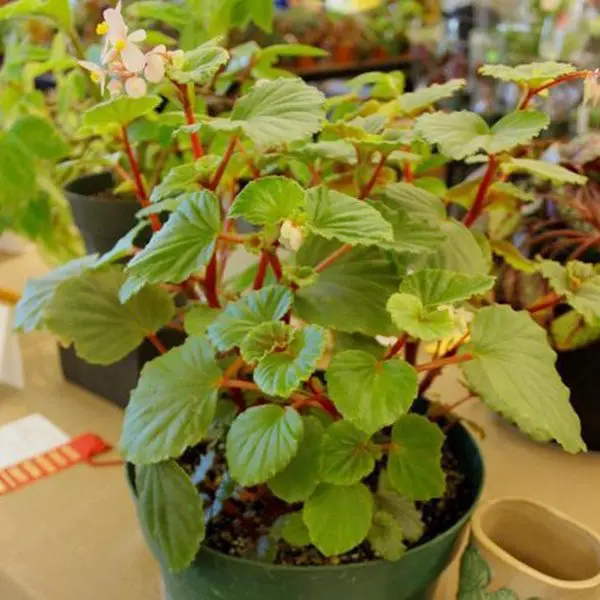Because it is such an easy seed crop, this type of Begonia is probably the most grown Begonia worldwide. It is tough, low water tolerant, and does not need a lot of care to bloom all year long. The common name of “wax Begonia” was given because of the thick, crisp, and waxy leaves.
These begonias are grown mostly as bedding plants and as annuals in northern gardens, but can be a perennial shrub-like begonia in areas that do not freeze. Plants are ever-blooming, with single or double flowers of every shade of red, pink and white. The leaves come mostly in two colors, green and bronze, but there are variegated types such as B. ‘Charm’ and ‘Calla’ types with new leaves that come out white.
Dragon Wing®
Dragon Wing® is often categorized as a type of Begonia, but in truth is just a Begonia hybrid created by PanAmerican Seed which combines a semperflorens type Begonia with another species (most likely B. rubriflora). This type of cross has been around for a very long time and other lesser-known cultivars have been released by hobbyist breeders as well. A truly outstanding landscape and container plant that has been one of the most popular begonias of all time.
Articles About Semperflorens Begonias
Semperflorens begonias: Most Are Sturdy, Easy
B. 'Kallaking', a varigated semperflorens-type begonia with reddish-pink flowers.The bulk of the...
An Old Begonia Gets a New Name
In a general article on begonias which I wrote for the December 2001 issue of Carolina Gardener…
Species that were combined to create today’s Semperflorens Begonias. There is no actual plant with the name Begonia semperflorens. Once upon a time, in the 1800s, there was one so named, but it turned out to be B. cucullata, and the name was abandoned by taxonomists. Gardeners kept using the name, however, and the name stuck even though it is incorrect. Instead, this type of Begonia is the result of many species being combined and thousands of generations of cross hybridizing with other cultivars.
Here are some of the species that have been used to create the modern semperflorens cultorum class:
and likely many others…

